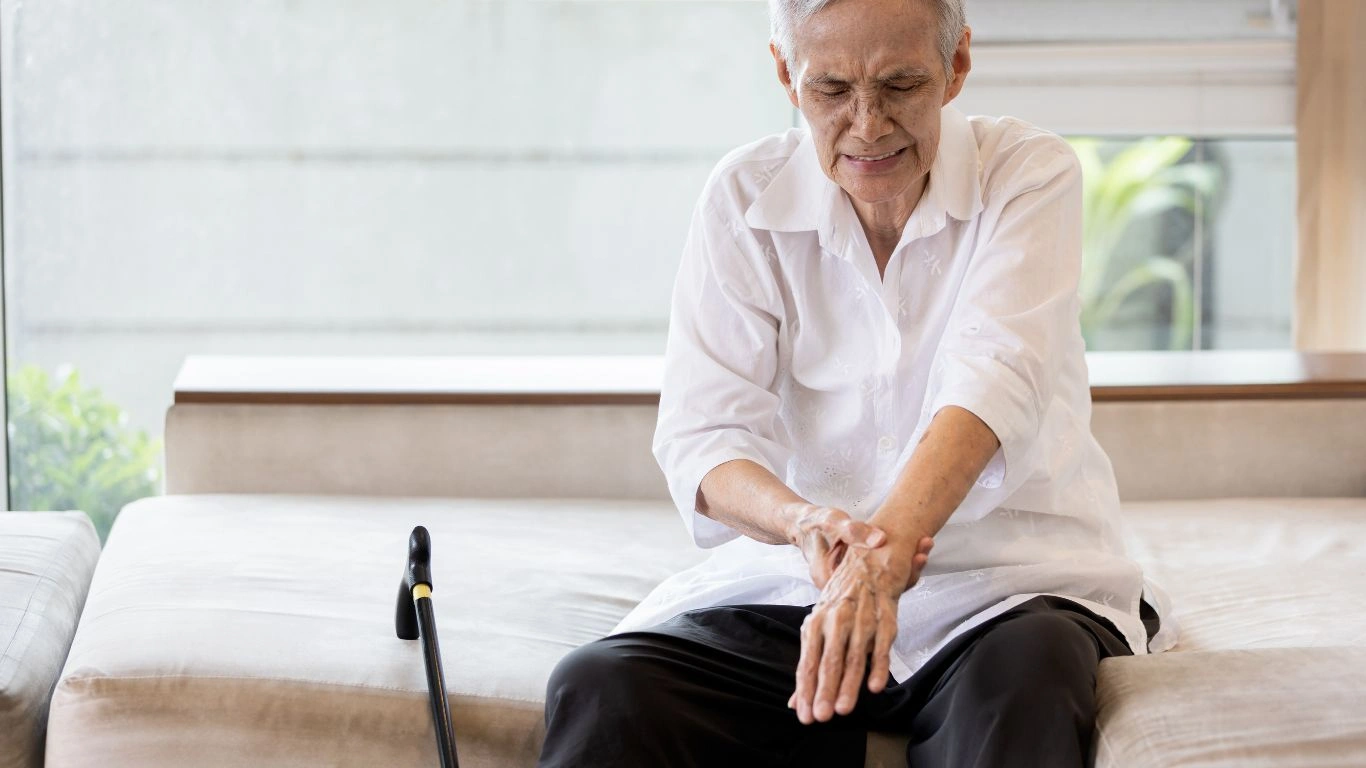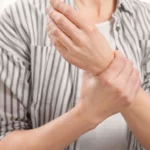Non-Drug Treatments for Rheumatoid Arthritis: Natural Approaches to Manage Pain and Inflammation
Rheumatoid arthritis (RA) is a chronic condition that causes pain, swelling, and stiffness in the joints, making everyday tasks challenging. While medication is often prescribed to manage symptoms, there are several non-drug treatments that can help reduce pain, inflammation, and improve overall quality of life. These treatments, which range from lifestyle changes to physical therapy, can be incredibly effective when combined with medical care. If you’re looking for ways to manage RA without relying solely on medication, read on to discover some of the most recommended non-drug treatments.
Rheumatoid arthritis doesn’t just affect your joints—it impacts your daily life, too. Whether you’re dealing with pain or stiffness, managing RA can feel overwhelming. But here’s the good news: You don’t have to rely only on medication. There are plenty of natural, non-drug treatments that can significantly help with pain relief, inflammation reduction, and improving mobility.
In this article, we’ll dive into some of the best non-drug treatments for rheumatoid arthritis. These treatments can complement traditional medications and might even reduce the need for them. Ready? Let’s go!
Lifestyle Changes for Managing Rheumatoid Arthritis
Adapting your lifestyle can play a big role in managing RA symptoms. It’s not just about what you do, but how you approach your day-to-day activities.
1. Exercise Regularly
It might seem counterintuitive to exercise when you’re in pain, but staying active is one of the best things you can do for your joints. Regular exercise helps maintain joint function, reduces stiffness, and improves flexibility. Low-impact exercises like swimming, walking, and cycling are particularly beneficial, as they reduce strain on the joints.
Plus, exercise releases endorphins, the body’s natural painkillers, which can help alleviate discomfort.

2. Maintain a Healthy Weight
Carrying extra weight can put unnecessary strain on your joints, especially in weight-bearing areas like the knees and hips. Maintaining a healthy weight reduces the burden on your joints and helps lower inflammation. If you’re overweight, even small weight loss can lead to significant improvements in your joint health and overall well-being.
3. Prioritize Rest and Stress Management
Getting enough sleep and managing stress are crucial for managing RA. Lack of rest can make symptoms worse, while chronic stress can trigger flare-ups. Aim for 7-9 hours of quality sleep each night and find stress-reducing activities that work for you, like meditation, yoga, or deep breathing exercises.
Physical Therapy and Occupational Therapy
Physical therapy (PT) and occupational therapy (OT) can help you manage the physical challenges of RA. PT focuses on exercises that improve movement, flexibility, and strength, while OT helps you modify your environment and daily tasks to reduce strain on your joints.
Physical Therapy
A physical therapist can design a personalized exercise program to strengthen the muscles around your joints and improve flexibility. Regular PT can also help reduce pain and improve your range of motion. In addition, physical therapists often teach strategies to protect your joints during activities like walking or lifting.
Occupational Therapy
An occupational therapist works with you to develop strategies that make daily tasks easier, such as using assistive devices or modifying the way you do things to reduce joint strain. Whether it’s learning how to grip objects without putting pressure on your fingers or finding ways to open jars without hurting your wrists, OT can be a game-changer.

Dietary Adjustments for RA Relief
What you eat can have a major impact on your RA symptoms. An anti-inflammatory diet rich in certain nutrients can help reduce swelling, pain, and stiffness.
1. Omega-3 Fatty Acids
Omega-3 fatty acids found in fish like salmon, sardines, and mackerel, as well as in flaxseeds and walnuts, have been shown to reduce inflammation. Studies suggest that these healthy fats may help alleviate joint pain and stiffness in RA patients.
2. Antioxidant-Rich Foods
Eating foods high in antioxidants, such as berries, leafy greens, and nuts, can help reduce inflammation. Antioxidants help combat oxidative stress in the body, which can contribute to joint damage and inflammation. Foods like spinach, kale, and blueberries are particularly powerful in fighting inflammation.
3. Avoiding Trigger Foods
Some foods may trigger inflammation and make RA symptoms worse. Processed foods, sugar, and refined carbs can all contribute to inflammation. It’s worth keeping track of how your body responds to certain foods and considering an elimination diet to identify your triggers.
Alternative Therapies for Pain Relief
In addition to lifestyle changes and physical therapy, there are several alternative therapies that can help reduce pain and improve joint function.
1. Acupuncture
Acupuncture, a traditional Chinese medicine technique, involves inserting thin needles into specific points on the body. Research suggests that acupuncture may help reduce pain and inflammation in RA patients by stimulating the body’s natural healing mechanisms. It’s worth considering acupuncture as a complementary therapy to help manage your symptoms.
2. Massage Therapy
Gentle massage can help reduce tension in the muscles surrounding your joints, improving flexibility and reducing pain. Regular massages may also help lower stress, which can have a positive impact on inflammation. Just make sure to consult with a therapist who has experience working with RA patients to avoid putting pressure on sensitive areas.
3. Heat and Cold Therapy
Applying heat or cold to affected areas can help alleviate pain and reduce swelling. Cold therapy can numb the area and reduce inflammation, while heat can help improve blood flow and relax tight muscles. Alternating between the two can offer relief, depending on what feels best for your body.

Conclusion
Managing rheumatoid arthritis is a multifaceted approach. By incorporating non-drug treatments like exercise, physical therapy, dietary changes, and alternative therapies, you can effectively reduce pain, improve mobility, and manage inflammation. Always consult with your healthcare provider before making any changes to your treatment plan to ensure you’re on the right track. With the right combination of treatments, it’s possible to lead a more comfortable life with RA.
Appendices
References
- National Institute of Arthritis and Musculoskeletal and Skin Diseases (NIAMS). (2023). Rheumatoid Arthritis: Treatments. Read Article
- Smith, R., & Johnson, L. (2021). Integrative Approaches to Managing Rheumatoid Arthritis. Journal of Rheumatology, 48(2), 150-158.
- American College of Rheumatology. (2023). Non-Drug Approaches for RA. Read Article
FAQs
- Can lifestyle changes really help manage RA? Yes! Exercise, maintaining a healthy weight, and managing stress can significantly reduce RA symptoms and improve overall joint health.
- What is the best exercise for rheumatoid arthritis? Low-impact exercises like swimming, cycling, and walking are ideal for individuals with RA. These activities help improve joint function without causing strain.
- Can acupuncture help with RA pain? Some studies suggest that acupuncture may help reduce pain and inflammation by stimulating the body’s natural healing processes. It’s worth exploring as part of your treatment plan.
- What foods should I avoid with rheumatoid arthritis? Processed foods, sugar, and refined carbs may trigger inflammation and worsen RA symptoms. It’s best to limit these in your diet.
- Is physical therapy effective for RA? Yes, physical therapy can improve joint mobility, reduce pain, and strengthen muscles around the joints, all of which are crucial for managing RA.
Disclaimer: The information provided in this article is for educational purposes only and should not be considered medical advice. Always consult with your healthcare provider before making any changes to your treatment plan or trying new therapies. Individual needs may vary, and professional guidance is essential.












